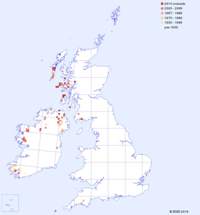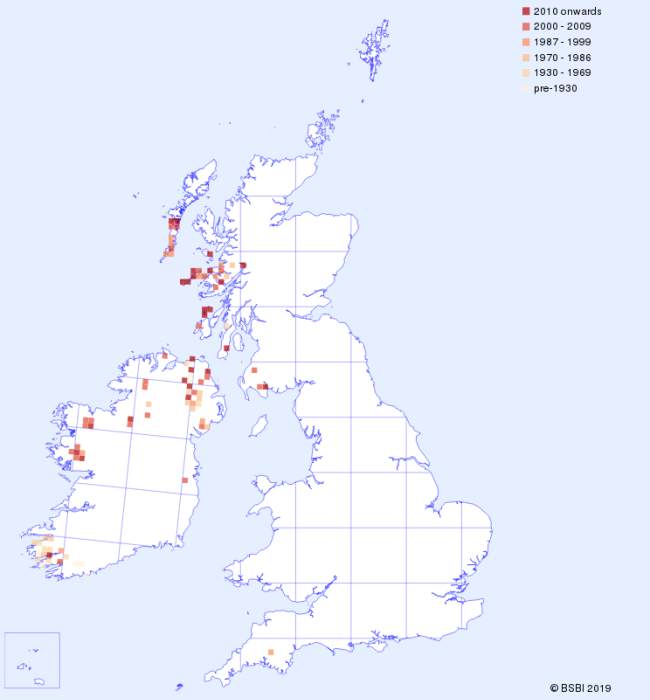This enigmatic plant has so-called 'amphi-Atlantic' distribution. Found in Scotland and Ireland and then across the Atlantic where it is widespread in parts of the United States, Spiranthes romanzoffiana is absent from mainland Europe. Many theories have been put forward to explain the phenomenon of Irish Lady's-tresses's distribution, but so far we are none the wiser. First recorded in Ireland in 1828 and in Northern Ireland in 1892, this orchid was subsequently found on Colonsay in 1930 but was not recorded on the Scottish mainland until 1954. In England Spiranthes romanzoffiana was recorded from a site in Devon (on the edge of Dartmoor) in 1957 but, despite the site remaining in pretty much the same condition since then, it has not been seen there since about 1993. Momentously, it was found in Wales (where it has never previously been recorded) in 2019 at Cors Fochno (Borth Bog) which, together with Ynyslas Dunes, forms Dyfi National Nature Reserve. Irish Lady's-tresses occurs on boggy, neutral-to-acid short-sward grassland. This orchid can survive being partially submerged on the edge of loughs or rivers, and it is notoriously difficult to spot when not in flower since the leaves are narrow and pointed and extremely well camouflaged among grass. Other habitats include disturbed peat-works, and in Scotland it is found on the transitional land between the lime-rich machair (sea meadows) and acid moorland slightly further inland. The most common habitat characteristic is that the ground in which it grows is heavily grazed, and it may be that the disturbance caused by animal poaching stimulates the plants into growth, as might digging or other disruption. Two other similar species occur in Britain, Creeping Lady's-tresses Goodyera repens and Autumn Lady's-tresses Spiranthes spiralis, but they differ from Spiranthes romanzoffiana in habitat and in the distinctly different shape of the flowers. Irish Lady's-tresses usually produces flowers around the end of July and the beginning of August. Spiranthes romanzoffiana is classified as Nationally Scarce in Britain and is protected in Northern Ireland under Schedule 8 of the Wildlife Order (NI) and in Ireland under the Flora (Protection) Order.
| Distribution Map | Key Features | |
 |
Records for Irish Lady's-tresses from BSBI are shown on the map with most recent in front. (Hover the mouse over the small map to expand it.) |
Plant: 10 to 35cm in height; stem yellow-green and slightly hairy towards the tip. |
Image Gallery for Irish Lady's-tresses Spiranthes-romanzoffiana
| Pollination | Taxonomy & Hybrids |
No specific pollination information is available, but extensive studies continue in the interests of conservation since Britain and Ireland are the only European countries where this species occurs. Populations in Britian and Ireland are known to reproduce vegetatively. |
The specific name romanzoffiana refers to Nicholas Romanzoff, a former Russian State minister. |
Articles about Irish Lady's-tresses in JHOS
